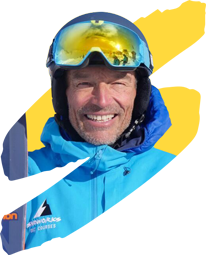
Sliding Doors! Moving Between Open & Closed. Skiing In Summer & Autumn
Phil Smith, Director of Snoworks Ski Courses explains how you can benefit from learning the difference between open and closed sports and how this knowledge can dictate when you decide to go skiing and what type of skiing you do.
We’ve had a lot of chat during the winter about the difference between open and closed sports and why at Snoworks during the winter months much of our time is spent developing skills for the open environment. But at Snoworks we also run courses in the summer and autumn so in this blog we explain the difference between open and closed and how you can benefit from moving between the two depending on the time of year you go skiing – winter, summer or autumn.
For those who have not been following the Snoworks blogs a quick recap on open and closed sports and what they mean to how you learn and how you perform.
A closed sport is a sport where the environment does not change and does not affect the performance of the athlete – running in lanes, swimming in lanes, high jump etc.
An open sport is where the environment is constantly changing and constantly affecting the athlete – mountain biking, surfing, football and rugby in open play are examples.
Then you have all the sports in-between – more closed or more open.
How we learn and develop skills for each is quite different. Closed sports have repetitiveness about the performance. The performance is pre-planned and rehearsed – throwing a javelin, front crawl. Open sports you adapt whilst performing, everything you do is different – akin to running through a crowded bar carrying a tray of drinks.
Skiing for many people is learnt in pretty closed environments where the terrain has been well-prepared – green, blue and easy red runs. Therefore skiers often learn a fairly closed way of skiing, their movement patterns are rehearsed and are fairly repetitive.
Looking at skiing in this way you can easily and clearly see why and where many learning plateaus come from. Many plateaus come from a repetitive movement pattern learnt for closed environments being attempted to be used in an open environment.
They key to development with greatly reduced learning plateaus is to recognize the difference between closed and open. Recognise how you’ve learnt previously and begin to use open and closed to your advantage.
As long as you recognize the difference between open and closed it’s pretty simple to understand the learning and performing process.
The benefit of learning in a closed environment is the performance is not affected by external factors leaving the performer free to focus on whatever it is they’re learning. This has great benefits when practicing a particular movement for example. When operating in an open environment where all external factors are changing the performer needs to focus on the ‘output’ – the speed and line.
It’s simple.
Closed – movement.
Open – speed and line.
Obviously as always there are exceptions to the rule.
However if you’ve learnt in a closed environment focusing on your movements you will need to change your focus onto speed and line when moving into an open environment.
So where does this leave us with training and the time of year?
The WINTER is an ideal time to GO OPEN. The snow is coming down and the whole mountain is open for business. It’s the time to explore, go places, enjoy and make the most of all the changing conditions.
The SUMMER and AUTUMN are the ideal time to GO CLOSED. The skiing on the glacier is well-prepared and constant. It’s the time to develop movements and skills.
If you’re into skiing all year round you’ll see this. The ‘closed’ slopes during the summer and autumn are filled with skiers developing their skills practicing their movements, rehearsing thousands of times to ‘groove’ their ‘technique’. When the mountains become open from early December then the focus can switch from movements to speed and line. All those thousands of rehearsed movements patterns grooved in the summer and autumn are all in the subconscious so the mind can be used to focus on speed and line, to go places and enjoy the snow, the mountains and the ever changing conditions.
At Snoworks during the winter months we’re involved in the open world of all-mountain skiing so you can see why much of time is focused on developing control over speed and line. Our summer and autumn programme is where we spend our time developing movements and grooving technique into the subconscious in preparation to go open in the winter. This is the time of year to TRAIN & DEVELOP SKILLS.
For the full range of summer and autumn courses including performance for All-Terrain, Race Carve, Pro Training, Eurotest, Test Technique & Gap click on the link below.
Snoworks Ski Courses
